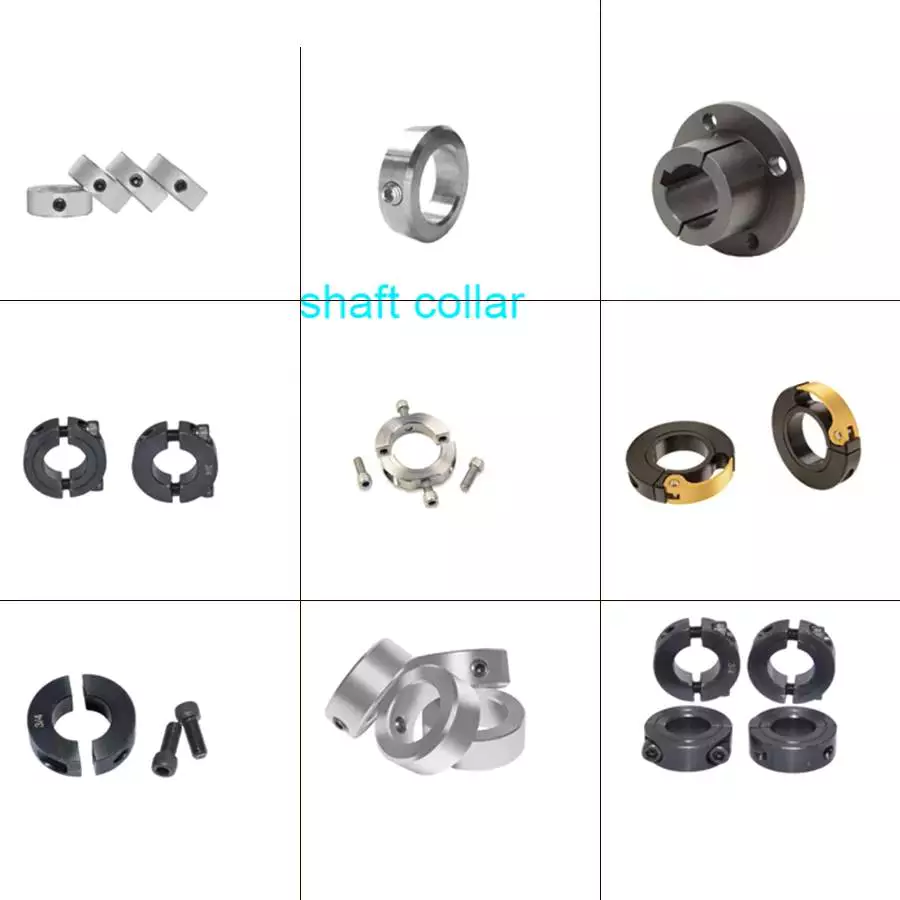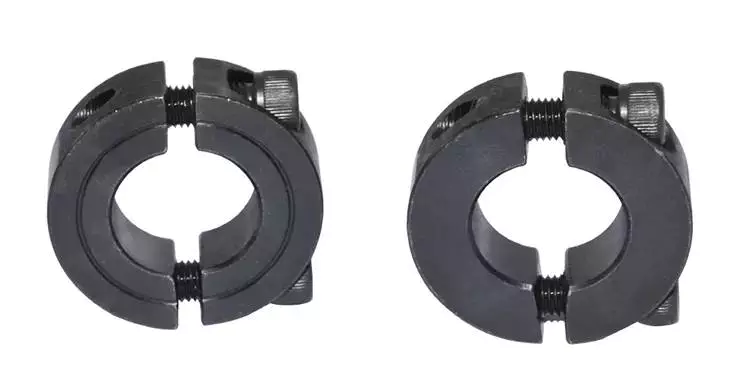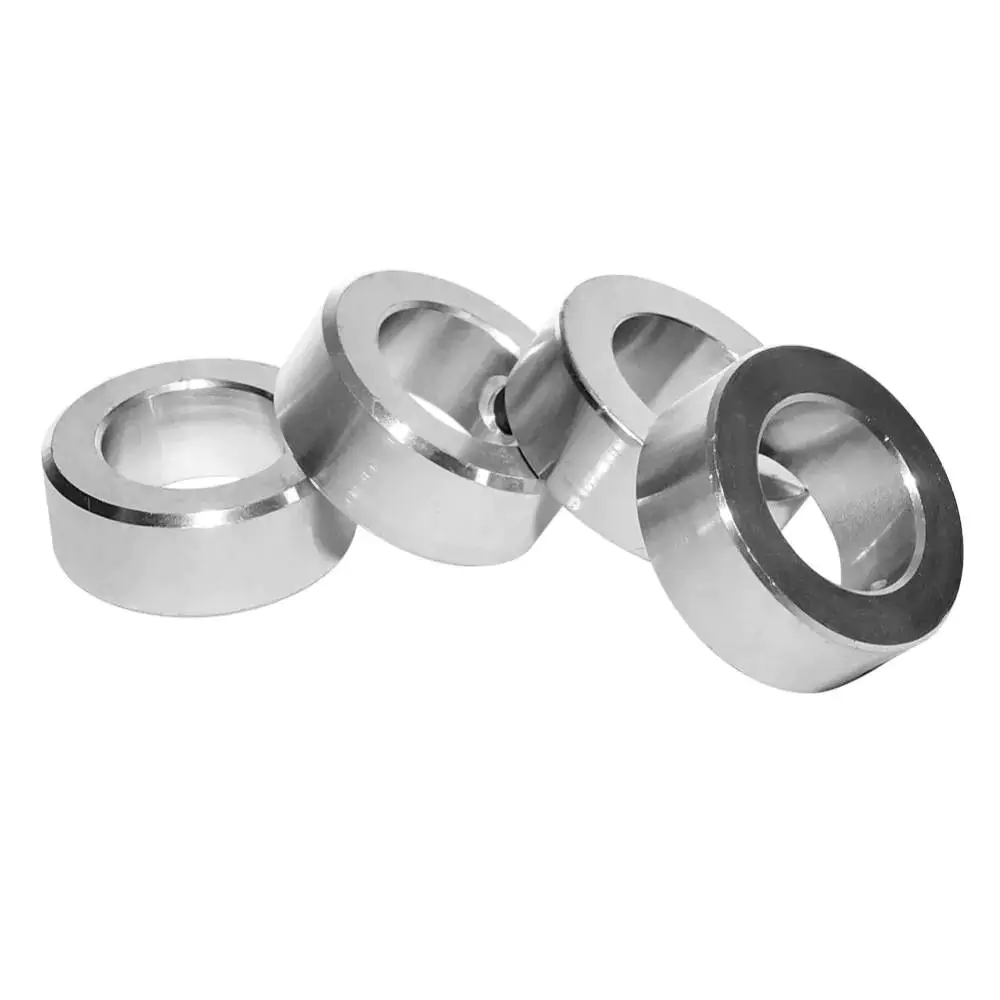Product Description
| Basic Info. of Our Customized CNC Machining Parts | |
| Quotation | According To Your Drawings or Samples. (Size, Material, Thickness, Processing Content And Required Technology, etc.) |
| Tolerance | +/-0.005 – 0.01mm (Customizable) |
| Surface Roughness | Ra0.2 – Ra3.2 (Customizable) |
| Materials Available | Aluminum, Copper, Brass, Stainless Steel, Titanium, Iron, Plastic, Acrylic, PE, PVC, ABS, POM, PTFE etc. |
| Surface Treatment | Polishing, Surface Chamfering, Hardening and Tempering, Nickel plating, Chrome plating, zinc plating, Laser engraving, Sandblasting, Passivating, Clear Anodized, Color Anodized, Sandblast Anodized, Chemical Film, Brushing, etc. |
| Processing | Hot/Cold forging, Heat treatment, CNC Turning, Milling, Drilling and Tapping, Surface Treatment, Laser Cutting, Stamping, Die Casting, Injection Molding, etc. |
| Testing Equipment | Coordinate Measuring Machine (CMM) / Vernier Caliper/ / Automatic Height Gauge /Hardness Tester /Surface Roughness Teste/Run-out Instrument/Optical Projector, Micrometer/ Salt spray testing machine |
| Drawing Formats | PRO/E, Auto CAD, CZPT Works , UG, CAD / CAM / CAE, PDF |
| Our Advantages | 1.) 24 hours online service & quickly quote and delivery. 2.) 100% quality inspection (with Quality Inspection Report) before delivery. All our products are manufactured under ISO 9001:2015. 3.) A strong, professional and reliable technical team with 16+ years of manufacturing experience. 4.) We have stable supply chain partners, including raw material suppliers, bearing suppliers, forging plants, surface treatment plants, etc. 5.) We can provide customized assembly services for those customers who have assembly needs. |
| Available Material | |
| Stainless Steel | SS201,SS301, SS303, SS304, SS316, SS416, etc. |
| Steel | mild steel, Carbon steel, 4140, 4340, Q235, Q345B, 20#, 45#, etc. |
| Brass | HPb63, HPb62, HPb61, HPb59, H59, H62, H68, H80, etc. |
| Copper | C11000, C12000,C12000, C36000 etc. |
| Aluminum | A380, AL2571, AL6061, Al6063, AL6082, AL7075, AL5052, etc. |
| Iron | A36, 45#, 1213, 12L14, 1215 etc. |
| Plastic | ABS, PC, PE, POM, Delrin, Nylon, PP, PEI, Peek etc. |
| Others | Various types of Titanium alloy, Rubber, Bronze, etc. |
| Available Surface Treatment | |
| Stainless Steel | Polishing, Passivating, Sandblasting, Laser engraving, etc. |
| Steel | Zinc plating, Oxide black, Nickel plating, Chrome plating, Carburized, Powder Coated, etc. |
| Aluminum parts | Clear Anodized, Color Anodized, Sandblast Anodized, Chemical Film, Brushing, Polishing, etc. |
| Plastic | Plating gold(ABS), Painting, Brushing(Acylic), Laser engraving, etc. |
FAQ:
Q1: Are you a trading company or a factory?
A1: We are a factory
Q2: How long is your delivery time?
A2: Samples are generally 3-7 days; bulk orders are 10-25 days, depending on the quantity and parts requirements.
Q3: Do you provide samples? Is it free or extra?
A3: Yes, we can provide samples, and we will charge you based on sample processing. The sample fee can be refunded after placing an order in batches.
Q4: Do you provide design drawings service?
A4: We mainly customize according to the drawings or samples provided by customers. For customers who don’t know much about drawing, we also provide design and drawing services. You need to provide samples or sketches.
Q5: What about drawing confidentiality?
A5: The processed samples and drawings are strictly confidential and will not be disclosed to anyone else.
Q6: How do you guarantee the quality of your products?
A6: We have set up multiple inspection procedures and can provide quality inspection report before delivery. And we can also provide samples for you to test before mass production.
/* January 22, 2571 19:08:37 */!function(){function s(e,r){var a,o={};try{e&&e.split(“,”).forEach(function(e,t){e&&(a=e.match(/(.*?):(.*)$/))&&1
| Condition: | New |
|---|---|
| Certification: | CE, RoHS, GS, ISO9001 |
| Standard: | DIN, ASTM, GOST, GB, JIS, ANSI, BS |
| Customized: | Customized |
| Material: | Alloy |
| Application: | Metal Recycling Machine, Metal Cutting Machine, Metal Straightening Machinery, Metal Spinning Machinery, Metal Processing Machinery Parts, Metal forging Machinery, Metal Engraving Machinery, Metal Drawing Machinery, Metal Coating Machinery, Metal Casting Machinery |
| Samples: |
US$ 3/Piece
1 Piece(Min.Order) | |
|---|
| Customization: |
Available
| Customized Request |
|---|

What are the steps for retrofitting machinery with shaft collars for improved performance?
Retrofitting machinery with shaft collars can be a beneficial step to improve performance, enhance functionality, or address specific issues. Here are the general steps involved in retrofitting machinery with shaft collars:
- Assessment and Planning: Start by assessing the machinery and identifying the areas where shaft collars can be installed or upgraded to improve performance. Consider factors such as misalignment, slippage, vibration, or inadequate gripping of rotating shafts. Plan the retrofitting process by determining the number of collars required, their sizes, materials, and any additional components or modifications needed.
- Measurement and Shaft Preparation: Accurate measurement of the shaft diameter is crucial to ensure proper fitting of the collars. Use calipers or other measuring tools to determine the shaft diameter at the desired installation points. Clean the shaft surface and remove any debris or contaminants that may interfere with the collar installation. If necessary, smooth out any rough surfaces or burrs on the shaft to ensure a proper fit.
- Selection and Procurement: Select the appropriate shaft collars based on the specific requirements of your machinery. Consider factors such as shaft diameter, collar style (set screw, clamp, or other), material (steel, stainless steel, aluminum, plastic), and any special features required for improved performance. Procure the necessary shaft collars from a reliable supplier or manufacturer.
- Installation: Follow the manufacturer’s instructions for installing the shaft collars. Generally, the installation involves sliding the collar onto the shaft at the desired location and securing it in place. Set screw collars require tightening the set screws against the shaft to create a tight grip, while clamp-style collars may require tightening bolts or screws to achieve a secure fit. Ensure that the collars are properly aligned and seated on the shaft, and tighten the fasteners to the recommended torque specifications.
- Testing and Adjustment: After installing the shaft collars, conduct thorough testing to ensure their proper functionality and improved performance. Check for any signs of slippage, misalignment, or excessive vibration. If necessary, make adjustments to the collar position, tightness of the fasteners, or other factors to optimize the performance. Repeat the testing and adjustment process as needed until the desired performance improvements are achieved.
- Maintenance and Monitoring: Regularly inspect the shaft collars as part of your machinery maintenance routine. Check for signs of wear, corrosion, or any issues that may affect their performance. Lubricate the collars if required, following the manufacturer’s recommendations. Continuously monitor the performance of the retrofitted machinery to ensure that the shaft collars are functioning as intended and providing the desired improvements.
It is important to note that the specific steps and considerations for retrofitting machinery with shaft collars may vary depending on the type of machinery, the complexity of the retrofit, and other factors specific to your application. Consulting the machinery manufacturer’s guidelines, seeking expert advice, or involving professional technicians can help ensure a successful retrofitting process and optimal performance improvements.

Can I find information on using shaft collars for positioning and securing components?
Yes, you can find a wealth of information on using shaft collars for positioning and securing components. Shaft collars are versatile mechanical devices that are widely used in various industries and applications to provide precise positioning and secure fastening of components on shafts. Here are some sources where you can find valuable information on using shaft collars for positioning and securing components:
- Manufacturer Websites: Many shaft collar manufacturers provide detailed information on their websites about the applications, installation techniques, and benefits of using shaft collars for positioning and securing components. They often offer resources such as product catalogs, technical specifications, installation guides, and case studies that showcase real-world applications. Visiting manufacturer websites can provide valuable insights into the capabilities and best practices associated with shaft collar usage.
- Online Resources and Blogs: There are numerous online resources and blogs dedicated to mechanical engineering, industrial applications, and component usage. These platforms often feature articles, tutorials, and guides that specifically address the topic of using shaft collars for positioning and securing components. Websites of engineering associations, industry publications, and educational institutions can be excellent sources of information in this regard.
- Technical Forums and Discussion Boards: Online technical forums and discussion boards are vibrant communities where professionals and enthusiasts share their knowledge and experiences. Participating in these forums or browsing through relevant threads can provide valuable insights and practical tips on using shaft collars for positioning and securing components. Users often discuss specific applications, troubleshooting techniques, and innovative use cases, offering a rich source of information.
- Engineering Books and Publications: Engineering books and publications covering topics such as mechanical design, machine elements, or industrial automation often include sections or chapters dedicated to shaft collars and their applications. These resources provide in-depth explanations, theoretical foundations, and practical examples of using shaft collars for positioning and securing components. Libraries, online bookstores, and academic institutions are good places to access these resources.
- Professional Networking: Engaging with professionals in the field, such as mechanical engineers, designers, or maintenance technicians, can provide valuable insights into the practical aspects of using shaft collars for positioning and securing components. Participating in industry conferences, seminars, or workshops, or connecting with professionals through social media platforms like LinkedIn, can facilitate knowledge sharing and discussions on best practices and real-world applications.
By exploring these sources, you can acquire a comprehensive understanding of the principles, techniques, and considerations involved in using shaft collars for positioning and securing components. It is important to consult multiple sources and consider the specific requirements of your application to ensure the most effective and reliable use of shaft collars in your projects.

Are there tutorials on the proper installation of shaft collars?
Yes, there are tutorials available that provide guidance on the proper installation of shaft collars. These tutorials can be helpful for individuals who are unfamiliar with the installation process or want to ensure that they are installing the collars correctly. Here are some common sources where you can find tutorials on the installation of shaft collars:
- Manufacturer Websites: Many manufacturers of shaft collars provide detailed installation instructions on their websites. These instructions may include step-by-step guides, diagrams, or videos that demonstrate the proper installation techniques. Visiting the websites of specific collar manufacturers and exploring their resources section or product documentation can help you find the installation tutorials you need.
- Online Industrial Communities and Forums: Industrial communities and forums dedicated to mechanical components or equipment often have discussions or threads related to the installation of shaft collars. Participating in these communities and posting inquiries about installation techniques can help you connect with professionals or experienced users who can provide guidance or share their knowledge.
- Video Sharing Platforms: Platforms like YouTube or Vimeo host a wide range of instructional videos, including tutorials on the installation of various mechanical components. Searching for “shaft collar installation tutorial” or similar keywords on these platforms can yield helpful videos that visually demonstrate the proper installation techniques. Watching these videos can provide a clear understanding of the installation process and any specific considerations to keep in mind.
- Trade Publications and Magazines: Trade publications or magazines related to mechanical engineering, industrial equipment, or power transmission may feature articles or guides on the installation of shaft collars. These resources often provide detailed explanations, tips, and best practices for proper installation. Checking these publications or their online platforms can give you access to written tutorials or expert insights.
- Online Documentation and Manuals: Some manufacturers or suppliers provide downloadable documentation or manuals for their shaft collars. These documents may include installation instructions along with other technical information. Searching for the specific collar model or brand, followed by keywords like “installation instructions” or “user manual,” can help you find relevant documentation that covers the installation process.
When using tutorials for shaft collar installation, it is important to ensure that the information is sourced from reputable and reliable sources. Follow the provided instructions carefully, and if in doubt, consult with professionals or seek guidance from the manufacturer. Proper installation of shaft collars is crucial for their effectiveness, reliability, and the overall performance of the machinery.


editor by CX 2024-04-09
by
Leave a Reply